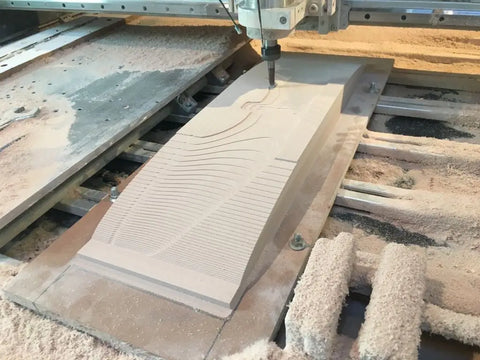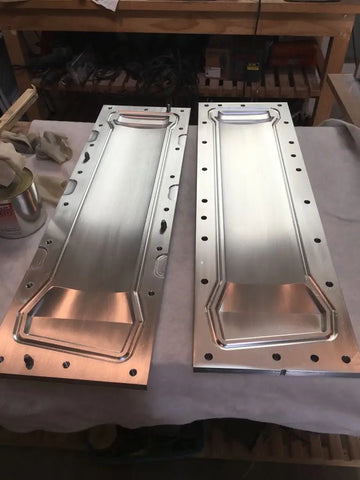
What is CNC Machining?
CNC, or "Computer Numerical Control," is a manufacturing process that utilises computer programming to direct tools and machinery in the creation of complex parts. This technology controls a variety of complex machines, such as CNC milling machines, lathes, laser cutters, water jet machines, and electric discharge machines (EDM), to perform precise three-dimensional cutting tasks.
How CNC Machining Works
The CNC machining process begins when a product file is programmed into the software and assigned to the appropriate tools and machinery. These tools then execute the cutting tasks as specified. The stages involved in CNC machining include:
- Designing a CAD Model: Creating a 3D design of the part to be manufactured.
- Converting the CAD File to a CNC Program: Translating the CAD model into a program that the CNC machine can understand.
- Preparing the CNC Machine and Tools: Setting up the machine and tools for the specific operations required.
- Executing CNC Machining Operations: The machine performs the cutting process, shaping the material into the final part.
Main Processes of CNC Machining
-
CNC Milling: This process involves a rotating multi-point cutting tool removing material from the workpiece. Most mills operate on a 3-axis system (X, Y, and Z).
-
CNC Turning: A single-point cutting tool is used to remove material from a rotating workpiece. The tool moves linearly while the workpiece spins, sculpting the material to the desired specifications. Most CNC lathes operate on a two-axis system (X and Z).
Features of CNC Machining

Advantages:
- Fast and Repeatable: Rapid removal of material with parts ready as quickly as one day.
- Scalable Volumes: Suitable for production runs ranging from one to 100,000 parts.
- High Precision: Offers tight tolerances, typically within +/-0.005″ – 0.01″.
- Custom Surface Finishes: Achieves various finishes, making parts appear as intended for final use.
- Material Variety: Compatible with over 50 metal and plastic materials, offering flexibility in production.
- Cost Efficiency: Lower investment in tooling and preparation, making it cost-effective for simpler structures.
Drawbacks:
- Structural Limitations: Some interlocking and hollow structures can be challenging to machine.
- Scale Effect: Unlike injection moulding, the unit cost and lead time reduction are less significant as production volume increases.

CNC machining remains a cornerstone of modern manufacturing, offering unparalleled precision, flexibility, and speed for producing custom-designed parts.
